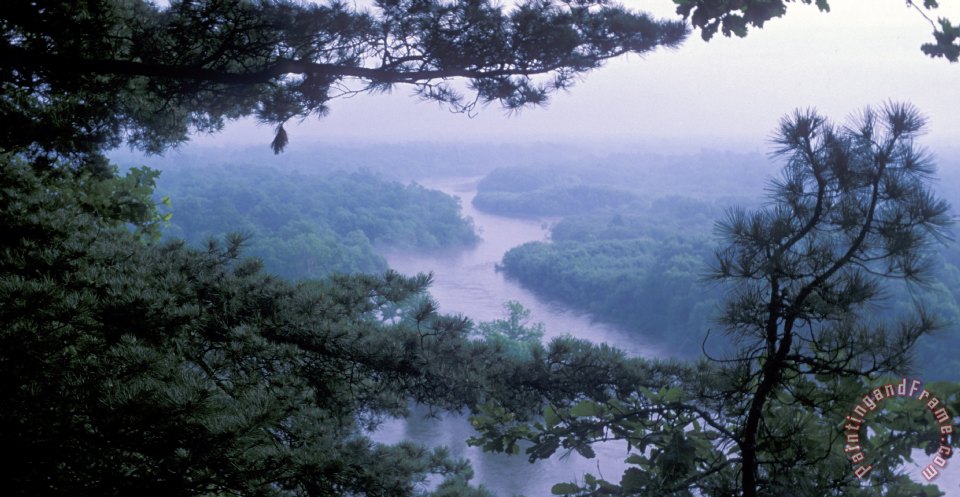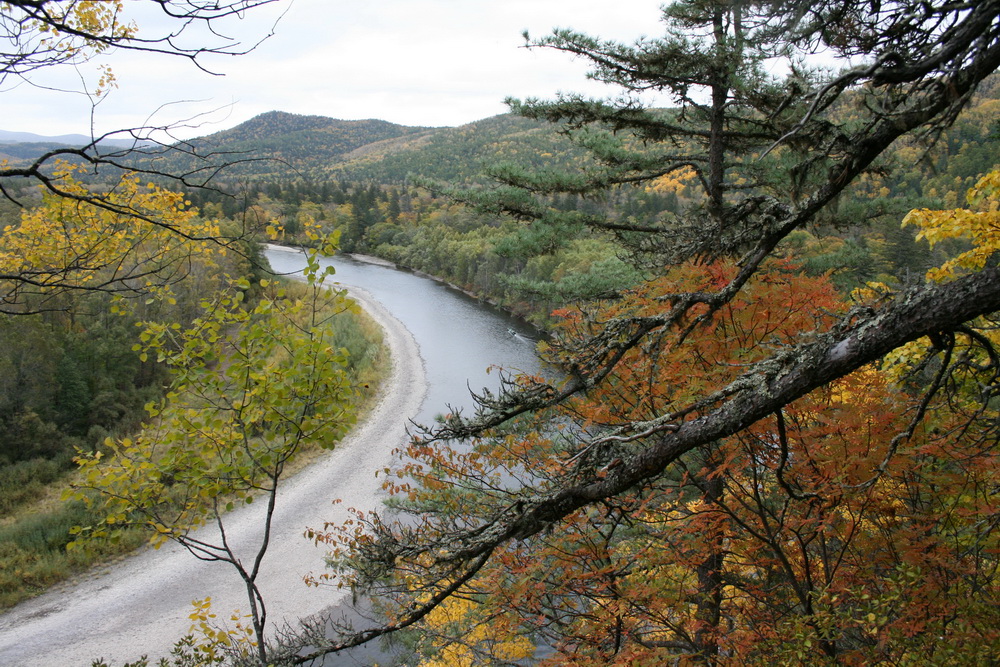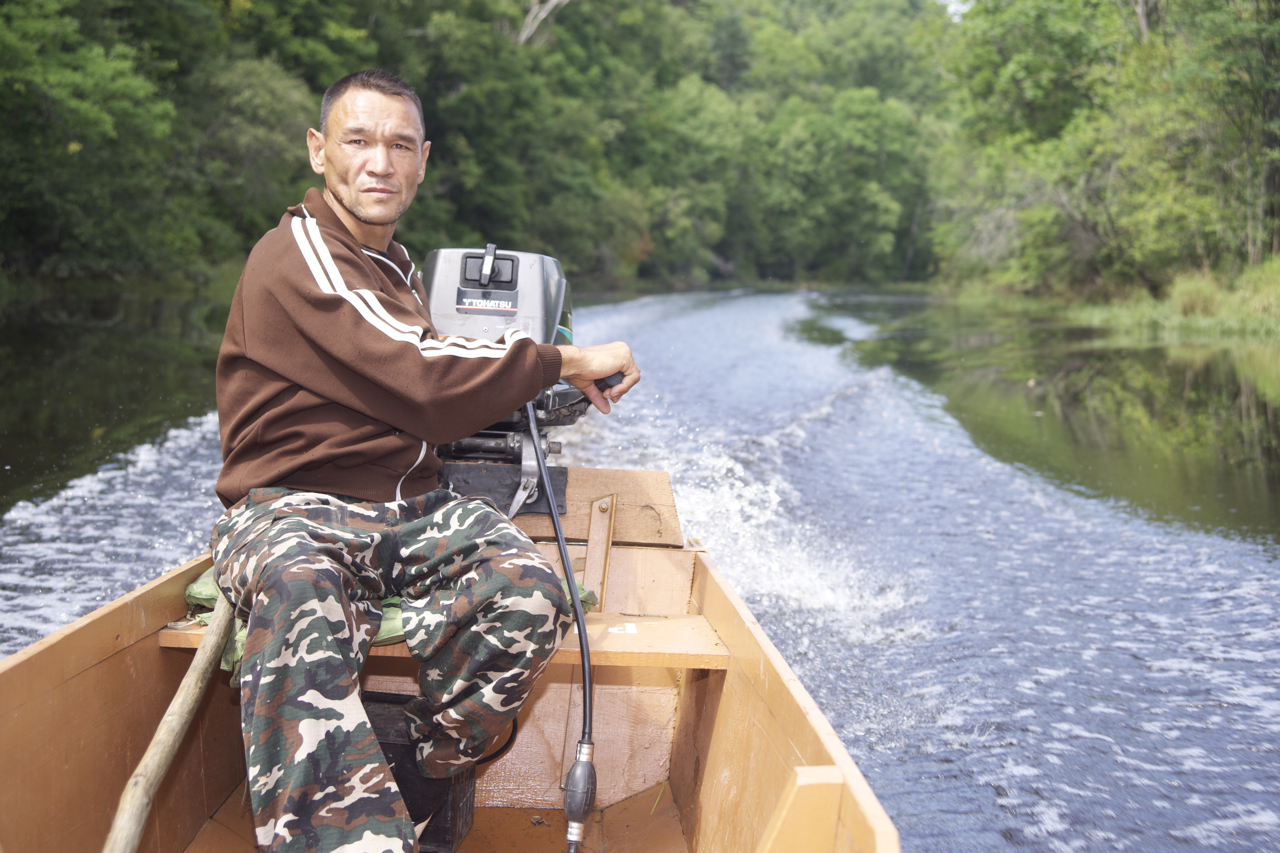Bikin River
Position of the Bikin ( Бикин ) in the catchment area of the Ussuri
Template: Infobox River / Obsolete
The 560 km long Bikin (Russian Бикин ) is a right tributary of the Ussuri River in the Far East of Russia ( Asia).
Course
The Bikin rises in 1380 m altitude near the main ridge of the Sikhote -Alin Mountains, on the north flank of the mountain Suchopadnaja ( 1,746 m ). In the upper reaches of the river first describes an arc to the north, east, then south, before turning to the west, which it maintains to the mouth. It flows through the mountains, which increasingly assumes a highland region in the west, in a mostly wide, forested valley in the far north of Primorye near the border with Khabarovsk. In the lower reaches, the river turns to the northwest, the Khabarovsk region reaches south of the city named after him Bikin and opens a little later at the village Wassiljewka in the Ussuri River (Chinese Wusuli Jiang). This Amur tributary forms here, 214 kilometers above its mouth, the border with the People's Republic of China.
The Bikin is near the mouth to 200 m wide and 2 meters deep. The largest tributaries are Sewa (length 139 km) from the left and Kljutschewaja (97 km) and Altschan (170 km) from the right.
Hydrographic
The catchment area covers 22,300 km ². With an average monthly water flow in estuary near 256 m³ / s, the Bikin one of the largest tributaries of the Ussuri. In the summer months it is often after heavy rains cause flooding.
The Bikin freezes between the end of November / early December and mid-April.
Flora and Fauna
In the extremely sparsely populated area of the upper and middle run, the river valley is in many places marshy, and the river forms a plurality of arms from. Spreads are covered with larch peatlands. In this field nests a number of rare bird species that are listed as endangered or critically endangered in the Red List of Threatened Species: Monk Crane (Grus monacha ), Red-crowned Crane (Grus japonica), Black-billed Stork ( Ciconia boyciana ), shed mergansers ( Mergus squamatus ) and giant Fish Owl (Bubo blakistoni ), next to, for example, in Russia the rare black stork (Ciconia nigra) and Mandarin duck ( Aix galericulata ). In the catchment area of the Bikin live Siberian tiger; the earlier occurring here Amur Leopard is no longer found. It is one of the northernmost areas in which there are plants such as ginseng, Eleutherococcus and other Araliaceae.
Infrastructure and economy
The Bikin is navigable in the lower reaches to about 25 kilometers from the town of Bikin; but currently are only three kilometers from the village Wassiljewka to the mouth as an inland waterway.
The area on the upper and middle reaches is very sparsely populated. The only place here is the settlement of Krasny Yar, which is inhabited among others by Udehe, an indigenous people of the area. In the lower reaches of the river between Lutschegorsk reached ( a few kilometers south of the river, the small tributary Kontrowod ) and the town of Bikin densely populated area with a number of villages. Here is the Trans-Siberian Railway from about Bikin to station Burlit - Wolotschajewski to a good 30 kilometers to the left bank of the river. In Bikin the railway line crossed by two bridges about five kilometers apart for one Streckengleis the river. The highway M60 " Ussuri " from Khabarovsk to Vladivostok crosses the river here.










